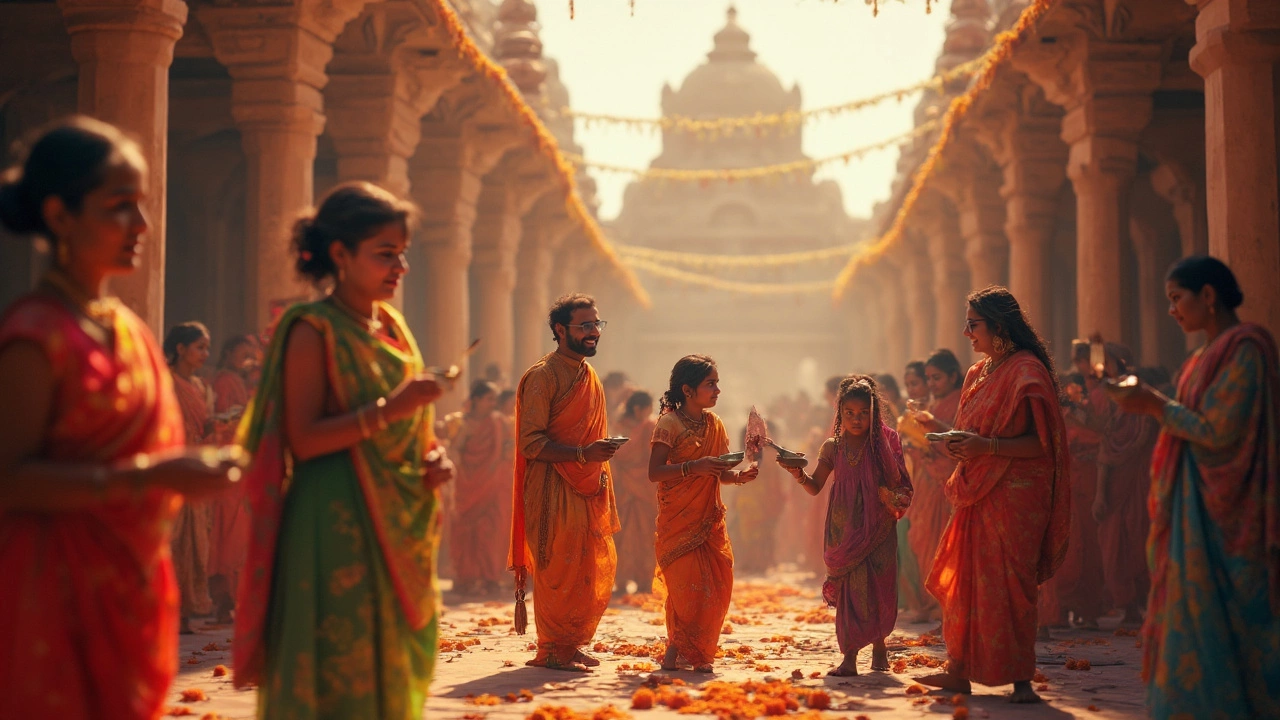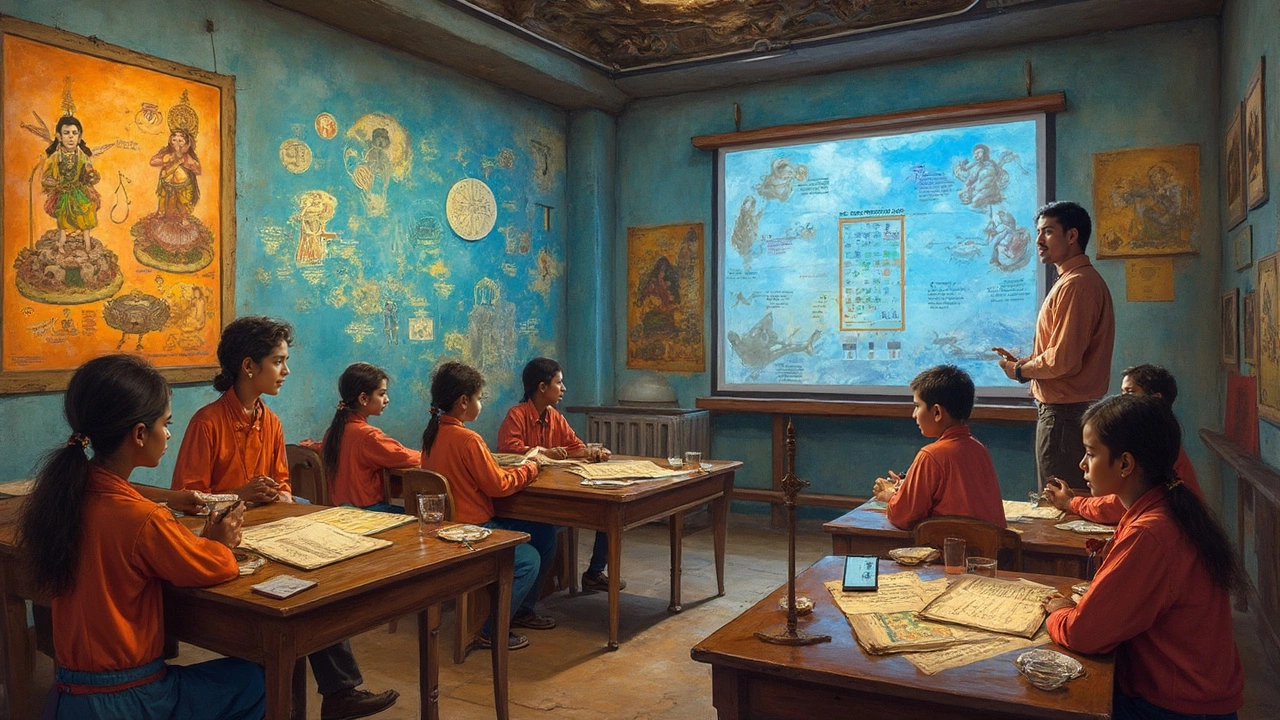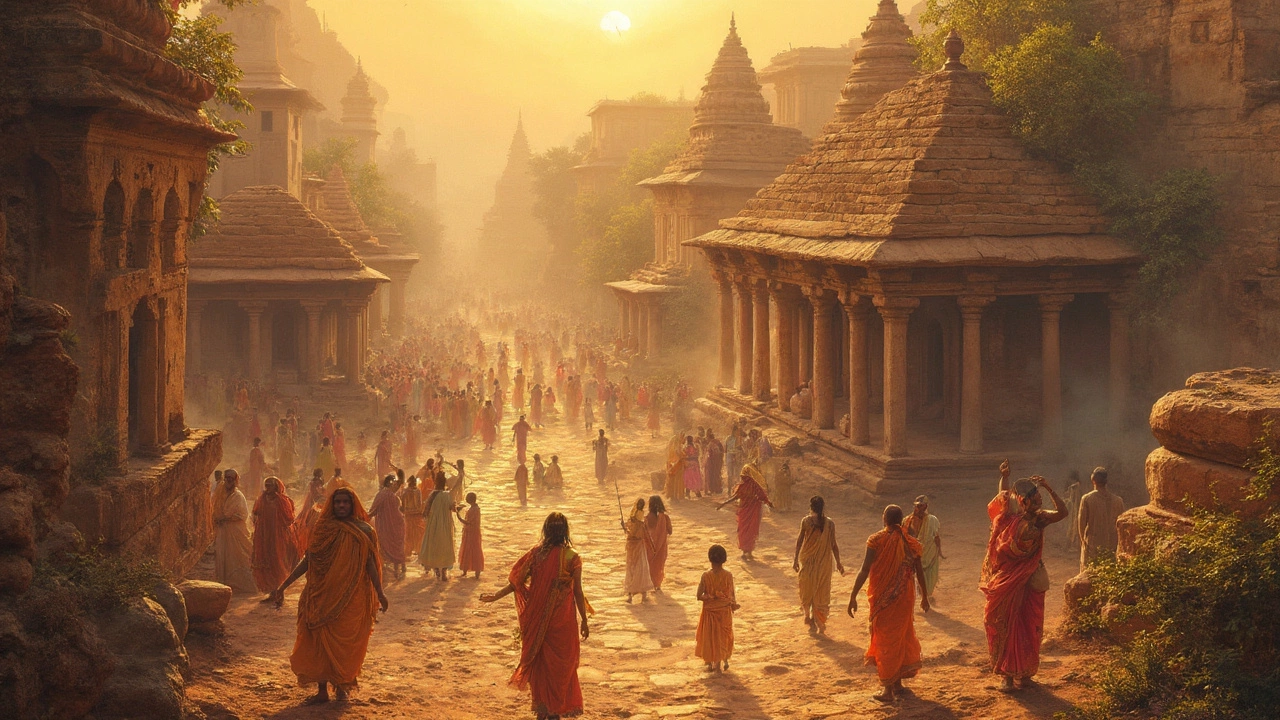Which belief system can truly be called the oldest? It’s not just a debate for scholars—it pops up every time an Indian festival comes around, and someone wonders why we’re still lighting lamps or throwing colors after thousands of years.
If you’ve looked for a simple answer, you’ll notice it’s messy. Old doesn’t always mean first, and a lot of so-called "facts" come from half-remembered stories or Instagram posts. But scientists and historians actually do have tools to dig up real proof—think stone carvings, ancient scriptures, and timelines that let us separate myths from reality.
If you want to see how ancient beliefs show up in everyday life—like in Holi, Diwali, or Pongal—you’re in the right place. The oldest religion debate isn’t just about bragging rights. It uncovers why we follow certain customs, what connects us to our ancestors, and where we fit into a story that started long before modern maps and modern countries.
- Digging Up Ancient Roots: What Counts as a Religion?
- Hinduism and the Case for Oldest Religion Status
- Proof on the Ground: Archaeology and Texts
- Other Contenders and Their Evidence
- How Ancient Festivals Live On Today
Digging Up Ancient Roots: What Counts as a Religion?
Everyone throws around the term “oldest religion,” but what does that even mean? Before we jump into which faith came first, let’s get clear on what a religion actually is. A religion isn’t just about believing in gods or spirits. It’s a whole system—rituals, stories, rules, and ways to celebrate or mourn together. For something to count as a *real* religion, most experts look for:
- A set of beliefs about life, death, and bigger powers.
- Regular rituals or ceremonies—think prayers, festivals, or sacrifices.
- Written or oral traditions that are passed down, not just made up yesterday.
- A community that shares these ideas and practices.
When scientists or historians talk about the oldest religion, they want proof. That means real stuff—like old temples, sacred books, cave art, or buried offerings. For example, archaeologists have dug up religious artifacts in places like India, Egypt, and Mesopotamia stretching back thousands of years. We’re talking pottery, statues of gods, fire altars, and even early versions of festival decorations.
Here’s a quick look at what experts usually find as “religious evidence” from ancient times:
| Type of Evidence | Examples |
|---|---|
| Artifacts | Symbols, statues of deities, ritual tools |
| Texts | Vedas, Sumerian tablets, Egyptian hieroglyphs |
| Architecture | Temples, altars, sacred spaces |
| Burial Practices | Graves with offerings, mummies, tomb art |
The trick is, some of the oldest stuff doesn’t look like the religions we know today. The people who made those temples or wrote early texts probably wouldn’t recognize modern forms of the faiths that claim their roots. But if you’re asking about the oldest religion with proof, you’ve got to rely on this kind of solid evidence—otherwise, it’s just guessing.
Hinduism and the Case for Oldest Religion Status
Ask ten people, and at least half will say Hinduism is the oldest religion in the world. But why do so many believe this—what's the proof? If you check the history books, Hinduism goes way back to the Indus Valley Civilization, which popped up around 2500 BCE. That means people living over 4,500 years ago did things—like yoga, fire worship, and river rituals—that look a lot like what happens in Indian festivals today.
Here’s something wild: Hinduism doesn’t have a single founder or "starting event" like many other religions. Instead, it grew as several different traditions and beliefs blended over ages. That’s why it’s often called a “way of life” more than a strict set of rules.
The world's thickest book, the Rigveda, is part of Hinduism. Historians date it between 1500 and 1200 BCE. For context, this was written way before the famous Egyptian pyramids had finished weathering and before Buddha or Jesus were even born.
“Unlike most other religions, Hinduism cannot be traced back to a single founder or even a specific date. It developed organically, making it arguably the world’s oldest ongoing religious tradition.” – Dr. Wendy Doniger, University of Chicago
This ancient proof isn’t just about stories. Archaeologists have actually dug up seals and symbols—like the Shiva-like figure at Mohenjo-daro—that match modern Hindu gods. Here’s a practical table to compare some key facts:
| Religion | Earliest Known Evidence | Main Text |
|---|---|---|
| Hinduism | 2500 BCE (Indus Valley) | Rigveda |
| Zoroastrianism | 1200 BCE | Avesta |
| Judaism | 1200-1000 BCE | Torah |
So when you see rituals at Diwali or hear someone recite a mantra, you’re catching echoes from thousands of years back. Scholars and archaeologists point out that unlike other ancient religions that faded, Hinduism stuck around and kept evolving, which makes a solid case for its "oldest" title.

Proof on the Ground: Archaeology and Texts
Talking about the oldest religion isn’t just guesswork—historians want real evidence. The best place to start is the Indus Valley Civilization. Known for cities like Mohenjo-daro and Harappa (dating back to at least 2500 BCE), this culture left behind seals, figurines, and weirdly detailed baths. Some artifacts show people meditating or using yogic postures, looking a lot like Hindu traditions you see today. The problem? No label says “this is Hinduism” on these seals. But they’re super old, and a bunch of scholars think they connect to later Hindu beliefs.
The real game-changer is the Rigveda. This ancient text is part of a group called the Vedas, written in Sanskrit. Most experts agree the Rigveda can be traced back to around 1500 BCE, maybe even earlier. It’s packed with hymns, rituals, and prayers that lay the groundwork for what we now call Hinduism. The language and practices in it match up with stuff people celebrate in Indian festivals today. And we’re not just talking a few similarities—whole chunks of temple rituals come straight from these verses.
Here’s a quick look at the facts behind these discoveries:
| Source | Date (approx.) | Key Find |
|---|---|---|
| Indus Valley Seals | 2500 – 1800 BCE | Images that look like yoga, animal totems, goddess figures |
| Rigveda | 1500 – 1200 BCE | Oldest surviving Hindu text, hymns still recited today |
Archaeologists keep digging up stuff—terracotta figurines, cremation sites, fire altars. These aren’t just museum things. They’re evidence people were doing rituals linked to modern-day Indian festivals thousands of years ago.
Don’t forget the texts beyond the Vedas. There’s the Upanishads, Puranas, and the epic Mahabharata, all showing the slow evolution of ideas and practices. Each time researchers find a new site or crack an old script, it shines another light on just how old some of these festival customs really are.
Other Contenders and Their Evidence
It’s not just Hinduism grabbing attention in debates about the oldest religion. There are a few other religions that historians take seriously when digging through ancient ruins and old texts. Here’s a look at some of these contenders—and the kind of proof backing their claims.
- Zoroastrianism: Originating in present-day Iran, Zoroastrianism goes way back—possibly around 1200 BCE or earlier. Its sacred text, the Avesta, has verses that are tough to date, but archaeological sites like Yazd and fire altars spread across Iran suggest Zoroastrians left a big mark. Some of their rituals are still celebrated today, especially among the Parsi community in India.
- Ancient Egyptian Religion: Ancient Egyptians built their temples and wrote hieroglyphics on everything—not just art, but prayers and instructions for the afterlife. We have written evidence of their religion from as far back as 2600 BCE. The big festivals—like the Opet Festival—linked people and gods, and you’ll see echoes of these ceremonies in Coptic traditions even now.
- Judaism: Jewish tradition traces its roots to Abraham, and written records like the Torah date back to around 1200 BCE. Archaeologists keep finding ancient Hebrew texts and synagogue remains all over Israel, giving solid evidence for one of the earliest monotheistic faiths.
Want to see how old some of these religions really are compared to each other? Check out these dates and key facts:
| Religion | Estimated Origin (BCE) | Main Evidence |
|---|---|---|
| Hinduism | ~2000-1500 | Vedas, Indus Valley sites |
| Zoroastrianism | ~1200-1000 | Avesta, fire temples |
| Judaism | ~1200 | Torah, ancient synagogues |
| Ancient Egyptian | ~2600 | Pyramid texts, temples |
So, is Hinduism the oldest religion? It’s in the mix. But don’t ignore what’s buried under the sands of Egypt or hidden in the fire temples of Persia. Each of these faiths brings proof—writings, rituals, and relics—that give us a clearer picture of what early humans believed and celebrated. If you love Indian festivals, you’ll notice some similarities in how ancient people everywhere honored their gods and marked the seasons. Tracing these roots gives you a fresh appreciation for both the differences and the big ideas these religions share.

How Ancient Festivals Live On Today
It’s wild to think some Indian festivals haven’t really changed in thousands of years. They’re like living proof that the oldest religion is still doing its thing. If you look at Diwali, there’s a good chance your ancestors celebrated it in more or less the same way—lighting lamps, sharing sweets, and telling stories about Rama and Lakshmi. Back then, there weren’t even ink pens, but people had clay lamps and oral traditions that survived fires, floods, and even foreign invasions.
Take Holi, for example. This festival of colors tracks all the way back to old Sanskrit texts, and archeologists found references to it on ancient temple walls. The wild splashes of color? That’s not just fun—it’s part of a centuries-old spring ritual that marked the end of winter and a win for good over bad. The science behind those natural colors is another cool story—herbs and flowers mixed into powder, sometimes for health reasons as much as spiritual ones.
Harvest festivals like Pongal and Makar Sankranti aren’t just family get-togethers; their basic rituals—boiling the new rice, flying kites, worshipping the Sun—are directly rooted in Vedic traditions. People still chant the same prayers and use the same symbols that show up in documents dating back to at least 1500 BCE, right when Hinduism started taking shape for real.
What’s even cooler? Science backs this up. There are records and carbon-dated artifacts that line up perfectly with legends about these festivals. Here’s a quick look at some of the oldest festivals and their origins, with proof based on written evidence:
| Festival | Earliest Known Reference | Key Rituals |
|---|---|---|
| Diwali | Padma Purana (~4th century CE) | Lighting diyas, Lakshmi puja |
| Holi | Ratnavali by King Harsha (7th century CE) | Throwing colored powder, bonfire |
| Makar Sankranti | Mahabharata (~4th century BCE) | Kite flying, offering grains |
| Pongal | Ancient Tamil poems (~5th century CE) | Cooking new rice, Sun worship |
If you want to experience these roots yourself, try visiting a village festival or talk to your grandparents about their oldest memories. Usually, they’ll remember something their parents did that goes way back—like that exact way they tie a mango leaf at the door or recite a short chant. That’s the real magic of the oldest religion—it’s stitched into celebrations so that even if you’re not thinking about history every time you eat a sweet, you’re part of a chain going way back.
